advocacy
It’s time to get clear on a language strategy for your child so that you can consistently practice language in your home and watch your child’s communication soar in less time!
Welcome!
I want to show you how to build better language skills at home so you can also parent with clarity and confidence!
Categories
hearing loss
sensory activities
sign language
1:1 Language Coaching
These are the kinds of resources that you will find on my blog!
Happy reading!
Ultimate List of Song Activities for Babies with Hearing Loss
June 5, 2023
Music is a powerful tool that has the ability to captivate individuals of all ages. For babies, it can be particularly effective in promoting language and cognitive development, which is why song activities for babies are recommended by pediatricians and speech therapists for babies and children with cochlear implants. Sensory activities for babies 6-12 months is a good place to look for even more recommended activities for babies with hearing loss.
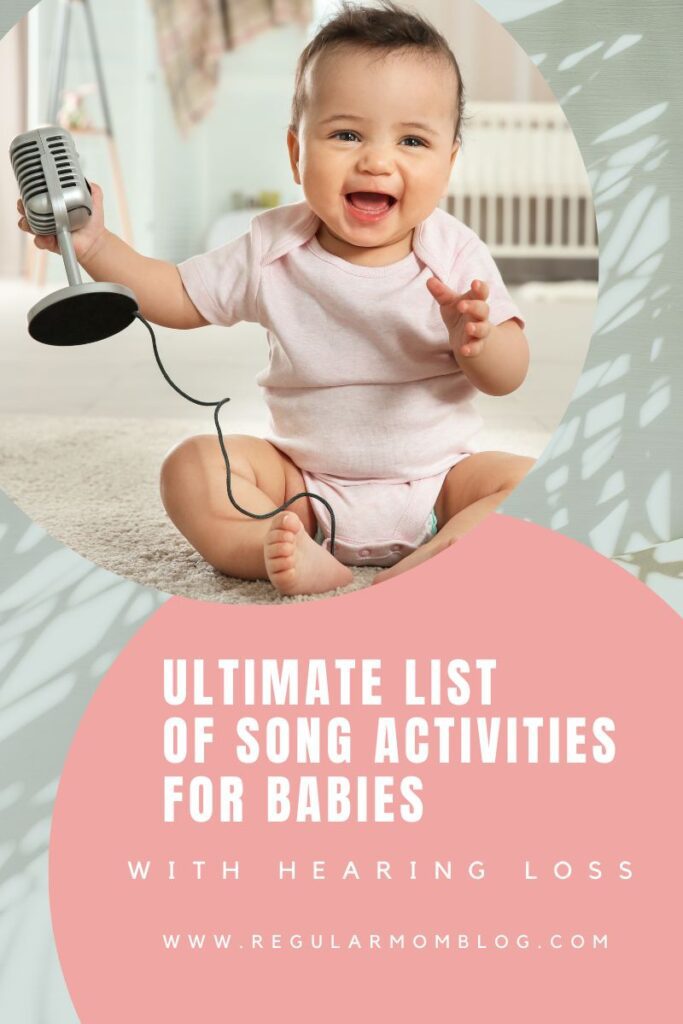
When our kids with cochlear implants were babies, we used many song activities for babies with hand motions as a main way of language development for them!
Sitting and performing language tasks were boring for them, and they would get distracted and lose interest quickly. Singing songs and dancing was a fun way that we were still able to teach them language, but through hands-on learning.
Even now, my two year old with regular hearing loves songs! She constantly sings them to herself during the day.
When I need her to do a task that she doesn’t want to do (i.e. brush her teeth or change her diaper), I turn it into a song. She is instantly mesmermized by the song, starts singing it with me, and does the task without being mad!
Through using songs and rhymes with my own kids, I’ve seen first- hand the power that music and song have with little ones. Even if you make the song up yourself (which I have done many times!), there is something about a singing rythm that speaks to babies and kids in a calming and engaging way.
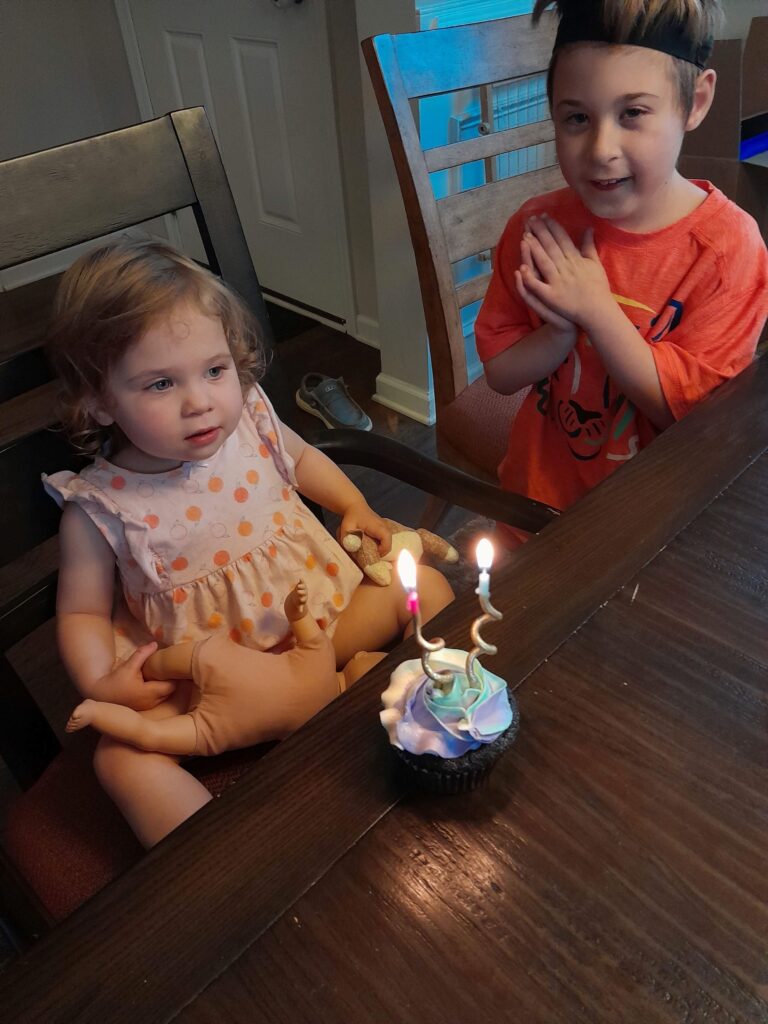
And, studies have shown that when exposed to music, infants tend to show improvements in processing speech and language.
Sing-along sessions with nursery rhymes and children’s songs can be a great way to not only expose your baby to language, but also create a fun and engaging environment for them to interact with you and their surroundings.
Using musical instruments is a fun way to incorporate more sensory and music into the song activities for babies.
Learning lyrics together and teaching your baby simple cues like “clap your hands” can also help with language development and promote cognitive skills like memory and attention.
Additionally, incorporating movement through dance and other physical activities can help improve motor skills and assist in establishing a stronger mind-body connection.
Song Activities for Babies – how it can help with language and cognitive development
Have you ever noticed your baby becomes entranced by a catchy tune or melody?
It turns out that music can have a profound impact on a baby’s language and cognitive development.
Song activities for babies involving rhythmic patterns and lively melodies can help facilitate language acquisition, memory development, and emotional regulation.
Even simply playing music in the background while engaged in everyday activities can also be beneficial for their cognitive development.
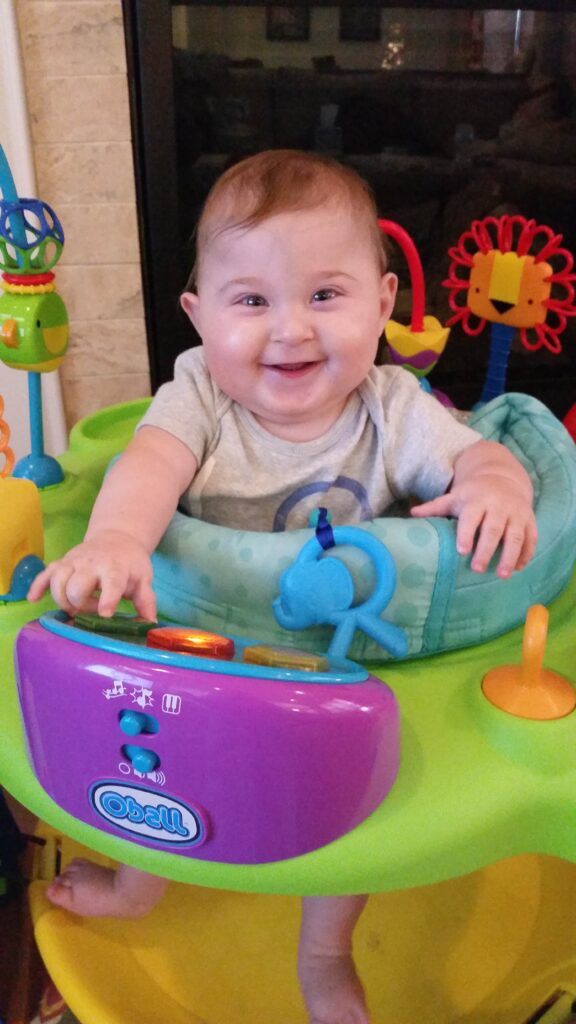
With my two boys who have cochlear implants, song activities and music were such an integral part of their babyhood! Our speech therapists encouraged us to use a variety of repetitive nursery rhymes with hand gestures that the boys could pick up on the pattern. We had so much fun with simple songs, and we also saw our kids’ spoken language increase as they learned the songs.
So, whether you’re singing along to lullabies at bedtime or grooving to nursery rhymes during playtime, introducing your baby to the power of music can be a fun and effective way to support their growth and development.
song activities with popular nursery rhymes and children’s songs
Did you love a certain nursery rhyme or song growing up? Now is the chance to bring it back with your own baby!
With classic tunes like “Twinkle, Twinkle, Little Star” and “The Wheels on the Bus” your baby is sure to love these playful song activities.
For babies with hearing loss, speech therapists usually recommend choosing songs that have an action to them. That way the baby can learn the lyrics to the song, and also the repetitive action that goes along with it. This helps with the baby’s pattern development.
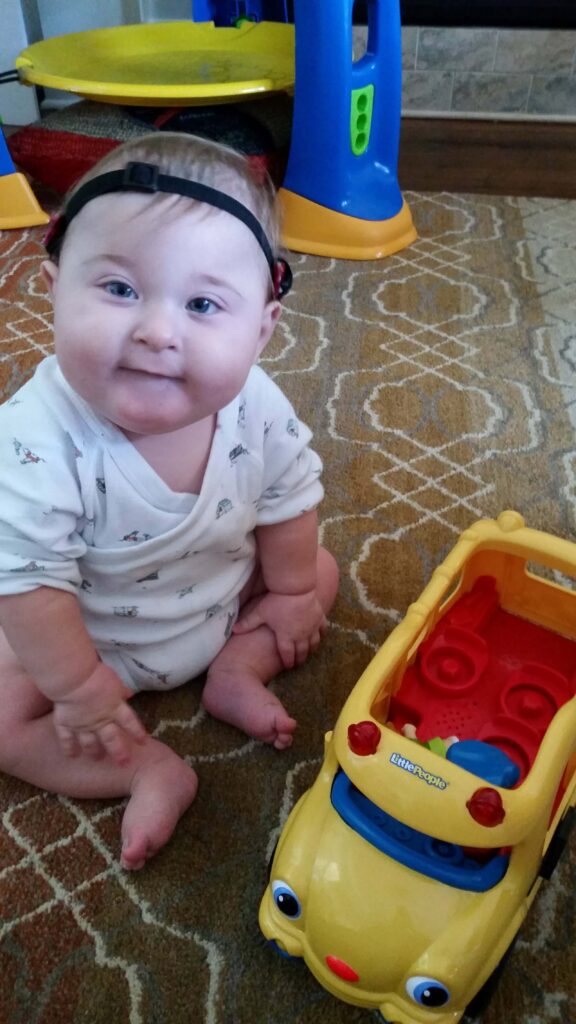
For an added bonus, you can incorporate ASL signs into the songs to help your baby develop their language skills even faster!
Here are some different songs that can be used in song activities for babies. Our kids’ favorites were Wheels on the Bus and Twinkle, Twinkle Little Star!
1. “The Wheels on the Bus”: This classic children’s song is a perfect choice for babies and toddlers. It has simple lyrics and repetitive melody, which makes it easy for babies to follow along. Parents can add actions to the song, such as mimicking the actions of the bus driver and passengers, to make it more engaging for their little ones.
2. “Row, Row, Row Your Boat”: This traditional nursery rhyme has been a favorite among parents for generations. It has a gentle melody and easy lyrics, making it perfect for soothing a crying baby. Parents can also add actions to the song, such as rocking back and forth, to create a calming and comforting environment for their little ones.
3. “Old MacDonald Had a Farm”: This beloved children’s song is great for teaching babies about animals and their sounds. Parents can make animal noises and encourage their babies to join in the singing. This song also allows the opportunity for parents to teach their children about different farm animals and their characteristics.
4. “If You’re Happy and You Know It”: This fun and interactive song encourages babies to follow along and participate. It has simple lyrics and catchy melody, making it easy for babies to understand and follow. Parents can also add actions to the song, such as clapping and stomping, to make it more engaging and interactive for their little ones.
5. “Twinkle, Twinkle, Little Star”: One of the most beloved nursery rhymes of all time and is a perfect addition to any song activity for babies. Parents can use hand gestures or clapping to make the song more interactive. For instance, parents can encourage their baby to clap along or trace the shape of a twinkling star in the air.
Singing is a great way to support language development, as babies are able to pick up new words and phrases through repetition and imitation. By singing nursery rhymes and children’s songs, parents can help their babies develop a love for music and learning.
Learn Song lyrics And Hand Motions together
Singing with your little one can be a wonderful bonding experience and a great chance to learn together.
Incorporating simple cue words and actions, like “clap your hands,” into song activities for babies can help them develop their coordination, cognitive skills, and response to direction.
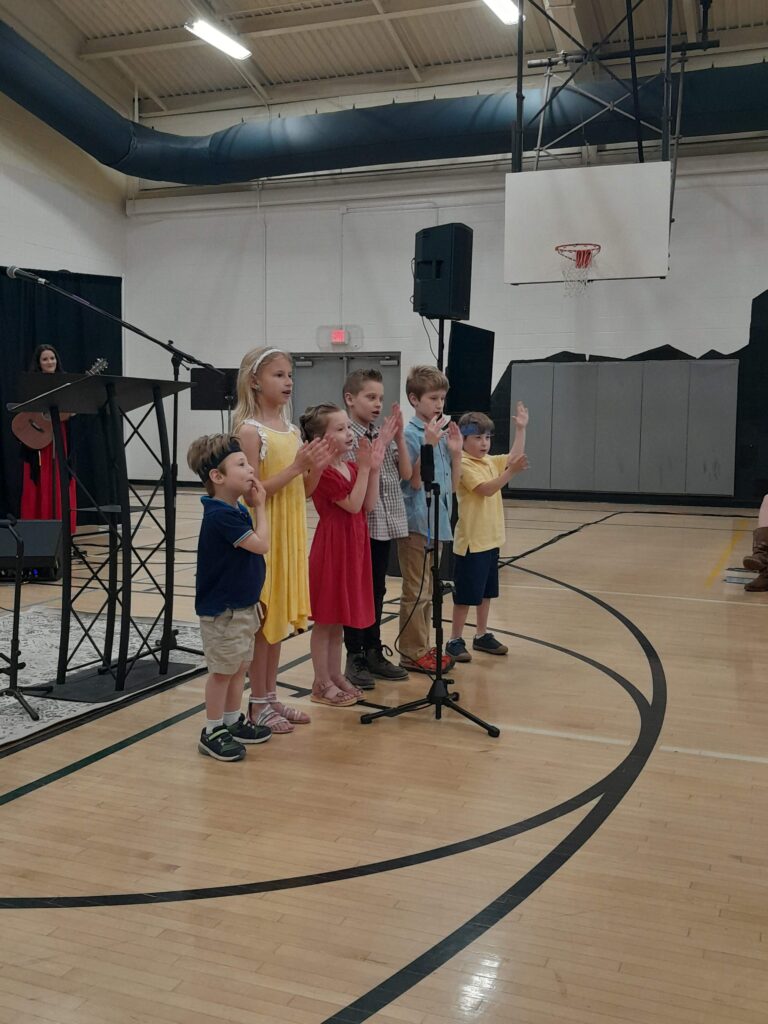
Using hand motions with songs also helps babies with hearing loss interact even more with the song. Many children’s songs have popular hand motions that everyone knows. However, feel free to make up your own silly hand motions to songs! Just remember to use those same hand motions each time you sing that song so that your baby can commit the song with the hand motions to memory!
Whether you’re singing a classic nursery rhyme or a contemporary hit, taking the time to learn the lyrics together can make the experience all the more rewarding.
Encourage movement through dance and other physical activities
It’s never too early to start encouraging movement, and babies love nothing more than a good song.
With the right playlist and fun activities, you can turn any playtime into a dance party.
Research has shown that incorporating physical activity into a child’s routine can have a positive impact on their development, including increased coordination and even improved language skills.
So put on your favorite tunes and get moving with your little ones. Who knows, you might just start a family tradition that will last a lifetime.
Show videos of other kids singing and dancing to inspire your baby’s creativity
Watching other kids sing and dance is a great way to inspire your baby’s creativity!
Introducing them to different forms of music and movement can help develop their cognitive and motor skills.
From silly dances to nursery rhymes, watching other little ones express themselves through song activities for babies is sure to bring a smile to your little one’s face.
Whether it’s on YouTube or in person, seeing other children enjoy music and dance can ignite a passion for self-expression in your baby. So go ahead and hit play, and let the inspiration begin!
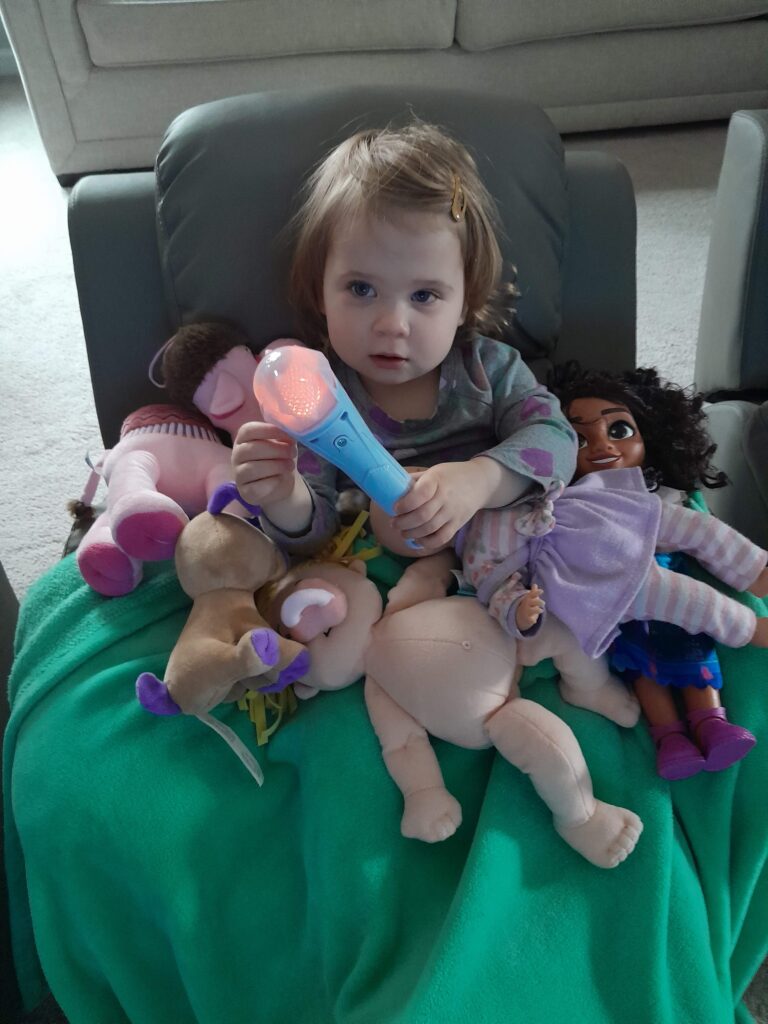
Music can be a powerful tool in aiding your baby’s language and cognitive development. Singing, playing instruments and moving to music provide babies with a holistic learning experience that is both enjoyable and stimulating.
By introducing your baby to nursery rhymes and children’s songs, you can help them develop a sense of rhythm, melody and pitch, which are important skills for future language development.
It is also crucial to involve your babies in singing and dancing activities, as it helps develop their physical coordination and gross motor skills.
Start making music and songs a central part of your baby’s day, and enjoy the endless benefits it brings!
Don’t forget to download your free Sensory Play Guide!
More Resources

tell me more!
tell me more!
@alemerinobranding.co
DESIGNED BY: ALE MERINO BRANDING CO.
COACHING
Navigation
PODCAST
ABOUT
HOME
Legal
PRIVACY POLICY
TERMS & CONDITIONS
Let's connect
EMAIL hello@raisingdeafkids.com
BLOG